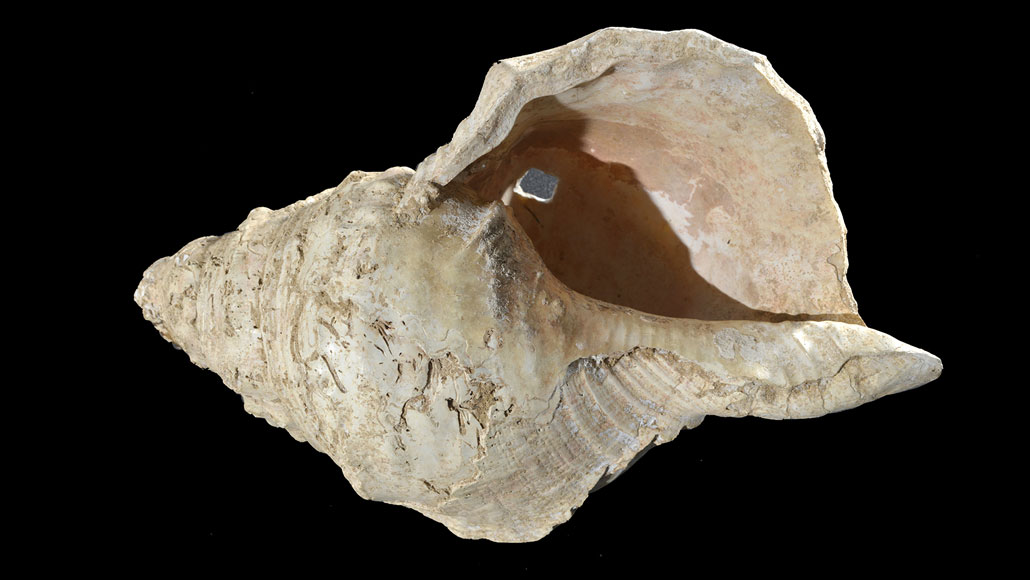Humans made a horn out of a conch shell about 18,000 years ago
Fitted with a modern mouthpiece, it plays the notes C, C sharp and D

A seashell found 90 years ago at the entry to a French cave displaying ancient wall paintings was made into a horn that could play musical notes around 18,000 years ago, researchers say.
C. Fritz, Muséum d’Histoire Naturelle de Toulouse







